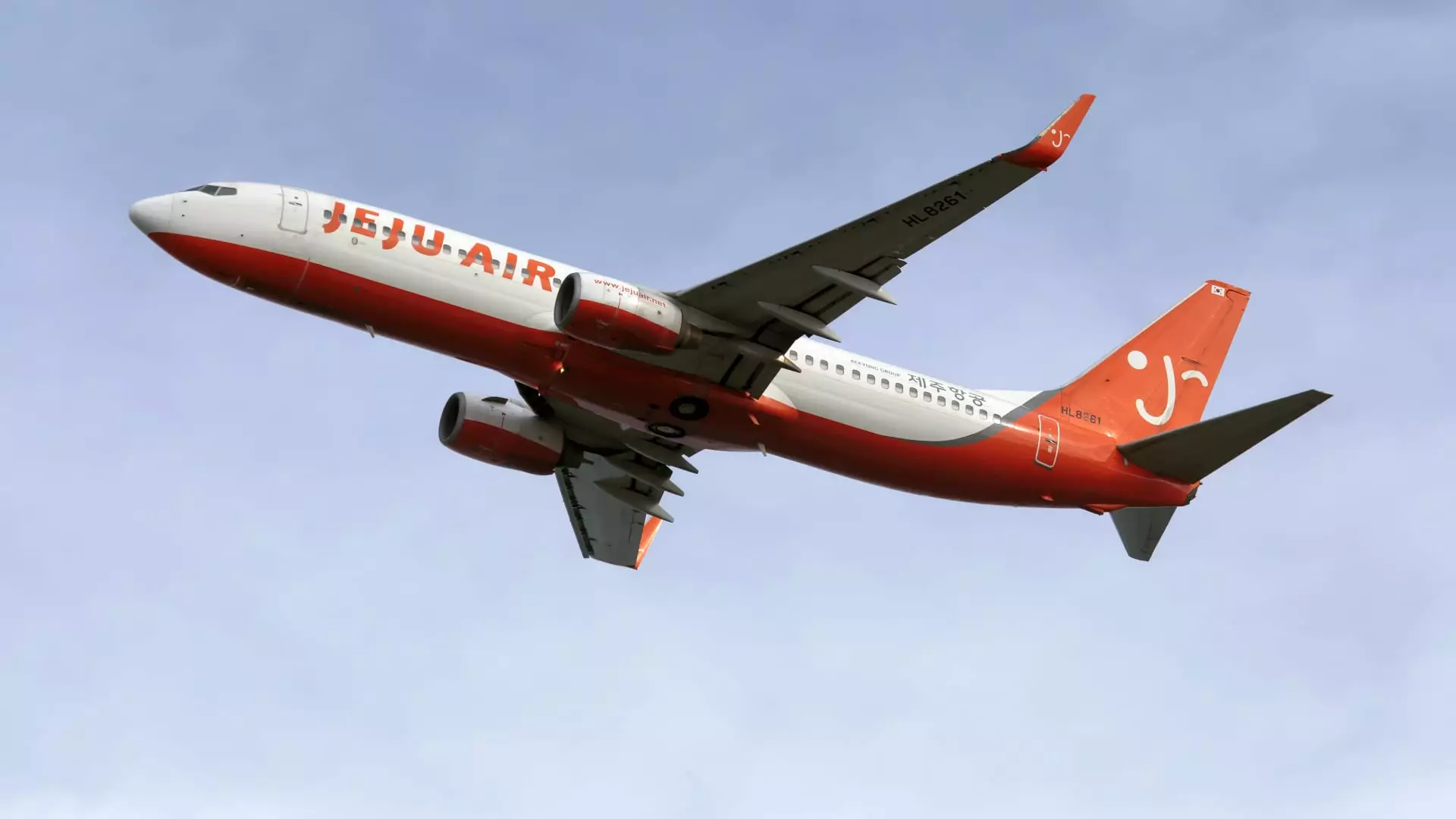In a harrowing incident that has shocked the aviation community and the general public alike, a Jeju Air flight tragically belly-landed at Muan International Airport in South Korea, resulting in the loss of 179 lives out of 181 aboard. This catastrophic event marks one of the most devastating air disasters the nation has witnessed in decades, prompting a swift investigation into the potential causes behind the aircraft’s landing without its landing gear engaged. This disaster has ignited concerns regarding the safety protocols in place for one of the most widely-used aircraft in the world—the Boeing 737-800.
The Boeing 737-800 model is renowned for its reliability and safety, often hailed as a workhorse for airlines globally. It stands as part of a significant fleet that constitutes a considerable percentage—around 17%—of the world’s operational passenger jets, according to data from aviation analytics firm Cirium. With a robust safety track record, the aircraft type had seemingly operated without major issues for years, pre-dating the notorious Boeing 737 Max, which faced serious scrutiny following two unprecedented crashes in 2018 and 2019. In light of this tragedy, South Korea’s acting President Choi Sang-mok has mandated an emergency inspection of all Boeing 737-800s in the country to ascertain the safety of this aircraft model.
The specific plane involved in the Muan crash was approximately 15 years old, having been delivered to Jeju Air after previously serving as a vital asset for the discount carrier Ryanair. As aviation experts analyze the situation, they are confronted with the challenging reality that identifying a long-term design flaw in an aircraft with such a longstanding positive safety record is exceedingly improbable. Richard Aboulafia, the managing director at AeroDynamic Advisory, stated, “The idea that they’ll find a design flaw at this point is borderline inconceivable.”
One of the most perplexing aspects of this disaster is the failure of the landing gear to deploy, even under adverse conditions. Though hydraulic issues could potentially impede landing gear functionality, pilots of the 737-800 have the option to manually lower the landing gear. This raises troubling questions and specters of operational oversights or technical failures leading to the catastrophic belly landing. Investigators have several theories to parse through, including the possibility of a sudden bird strike that may have incapacitated the engines during the flight.
As explained by Jeff Guzzetti, a seasoned air safety investigator, such incidents at cruising altitude could severely limit a crew’s time to execute emergency protocols effectively. Furthermore, Guzzetti posited that had the aircraft not encountered a hard wall at the end of the runway, the overall survivability of the incident could have been significantly improved. It paints a dire picture of the broader implications surrounding rapid emergency responses and the need for exhaustive training for both pilots and ground crews.
The investigation’s trajectory will be crucial in uncovering the underlying issues that led to this catastrophe. The National Transportation Safety Board (NTSB) from the United States will lead the investigation, accompanied by representatives from Boeing and the Federal Aviation Administration (FAA), given that the aircraft was manufactured in the United States. Under the frameworks of international aviation protocols, South Korea, where the tragedy unfolded, will oversee the process. This collaboration underscores the necessity for comprehensive accountability and transparency in aircraft safety investigations to prevent future tragedies.
The multitude of factors contributing to flight safety, including mechanical reliability, operational protocols, and responsive training, all demand vigilant scrutiny to coordinate an optimal safety environment leading into the future. As the investigation unfolds, the aviation industry remains on edge, grappling with digesting this profound accident, urging a re-examination of safety standards and practices that govern air travel today.
The Muan International Airport disaster serves as a somber reminder of the vulnerabilities within aviation, underscoring the importance of relentless improvements and unyielding diligence in safeguarding lives in the skies. While the Boeing 737-800 boasts a trusted legacy, the tragedy emphasizes the necessity of continuous vigilance in the quest for operational excellence.

